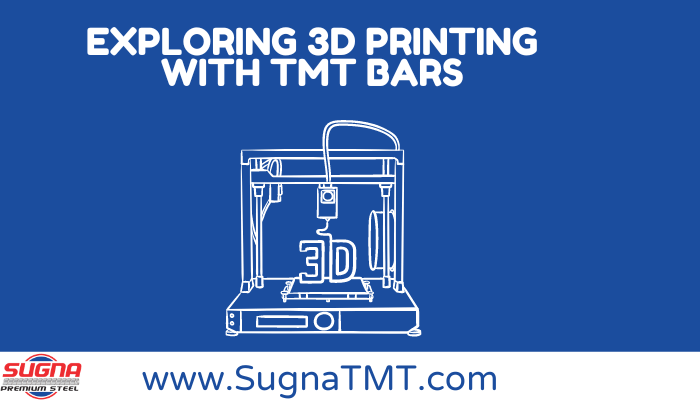3D printing technology has revolutionized various industries, including construction, by offering unprecedented levels of efficiency and customization. As the construction sector continues to embrace innovative solutions, the integration of TMT (Thermo-Mechanically Treated) bars in 3D printing processes presents a promising avenue for the future of building.

Understanding TMT Bars: Strength and Versatility
TMT bars are renowned for their exceptional strength, durability, and flexibility, making them indispensable in traditional construction projects. With their ability to withstand high levels of stress and strain, TMT bars serve as ideal reinforcement materials for 3D printed structures, ensuring enhanced structural integrity and longevity.
Advancements in 3D Printing Technology
The field of 3D printing has witnessed rapid advancements in recent years, with significant breakthroughs in materials, techniques, and scalability. From printing small-scale prototypes to constructing entire buildings, 3D printing technology has evolved to meet the demands of diverse construction applications.
Integration of TMT Bars in 3D Printing
Integrating TMT bars into 3D printing processes presents unique challenges and opportunities. While incorporating reinforcement materials into the printing process requires careful consideration of design parameters and material compatibility, the resulting structures benefit from improved strength, stability, and resilience.
Benefits of Using TMT Bars in 3D Printing
The integration of TMT bars in 3D printing offers numerous advantages for construction projects. Enhanced structural integrity, cost-effectiveness, and sustainability are among the key benefits, making this technology an attractive option for architects, engineers, and developers seeking innovative solutions.
Potential Applications of 3D Printing with TMT Bars
The potential applications of 3D printing with TMT bars are vast and varied. From residential construction to infrastructure projects, the ability to create customized, durable structures with intricate designs holds immense promise for the future of architecture and engineering.
Addressing Challenges and Limitations
Despite its potential, 3D printing with TMT bars is not without its challenges. Regulatory hurdles, material quality control, and safety concerns must be addressed to ensure the widespread adoption of this technology and gain industry acceptance.
Future Outlook and Trends
Looking ahead, the future of construction with 3D printing and TMT bars is bright. Continued research and development efforts, coupled with advancements in materials science and technology, will pave the way for new innovations and applications in the years to come.
Why Choose Sugna TMT for Your TMT Bar Needs
When it comes to TMT bars, expertise matters. That’s why Sugna TMT is your go-to choice. With years of experience and a commitment to excellence, we provide the guidance and products you need for successful construction projects.
Conclusion
In conclusion, the integration of TMT bars in 3D printing processes represents a transformative leap forward for the construction industry. By harnessing the combined power of advanced materials and cutting-edge technology, architects, engineers, and builders can create structures that are not only structurally sound and aesthetically pleasing but also environmentally sustainable and cost-effective.
FAQs
How do TMT bars enhance the structural integrity of 3D printed constructions?
TMT bars reinforce 3D printed structures, providing additional strength and durability, which is crucial for withstanding structural loads and ensuring long-term stability.
Are there any limitations to using TMT bars in 3D printing?
While TMT bars offer numerous benefits, challenges such as material compatibility and design complexity need to be addressed to fully leverage their potential in 3D printing applications.
What are the cost implications of integrating TMT bars into 3D printing processes?
While initial setup costs may be higher, the long-term benefits of enhanced structural integrity and reduced maintenance outweigh the initial investment, making it a cost-effective solution in the long run.
How does 3D printing with TMT bars contribute to sustainable construction practices?
By optimizing material usage and reducing waste, 3D printing with TMT bars promotes sustainable construction practices, minimizing environmental impact and conserving resources.
What role will TMT bars play in the future of construction technology?
As 3D printing technology continues to evolve, TMT bars will play an increasingly important role in enabling the construction of resilient, sustainable structures that meet the demands of an ever-changing world.

